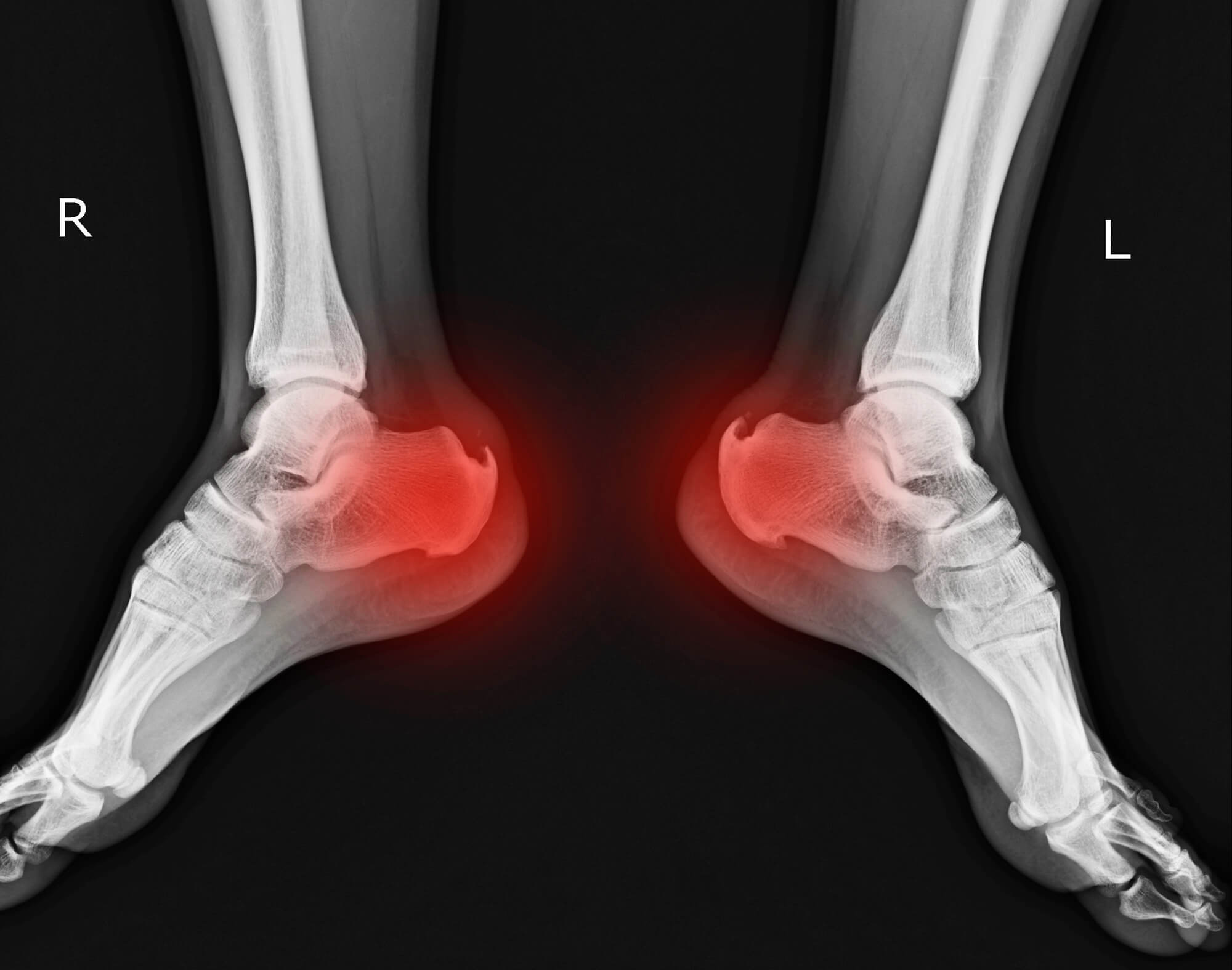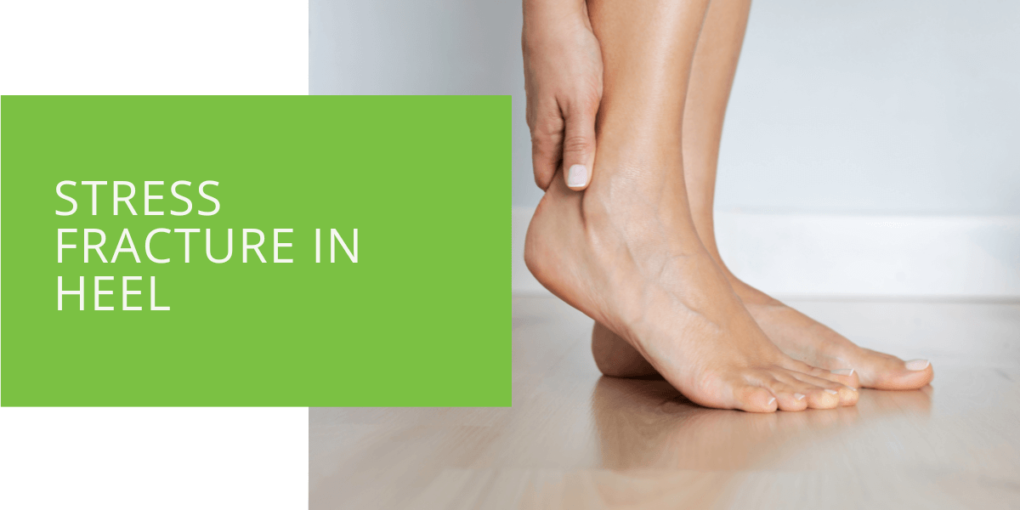Stress Fracture in Heel: Symptoms, Causes & Treatment
A stress fracture in the heel is a small crack or break in the bone that occurs due to repetitive or excessive stress. This fracture is commonly seen in athletes and individuals who engage in high-impact activities, such as running or jumping. While stress fractures can occur in any bone in the body, they are most commonly found in the foot, particularly the heel bone.
A stress fracture in the heel can lead to more serious injuries, such as a complete bone break, if left untreated. Therefore, it is important to seek medical attention as soon as possible if you suspect you may have a stress fracture in your heel. Treatment may include rest, immobilization, and physical therapy; surgery may be necessary in rare cases.
This article will explore the symptoms, causes, diagnosis, and treatment of stress fractures in the heel, as well as ways to prevent them from occurring. Suppose you are experiencing heel pain and think you may have a stress fracture. In that case, it is important to consult with a podiatrist or other medical professional for proper diagnosis and treatment.
What is a Stress Fracture in the Heel?
Definition
A stress fracture is a small crack or breaks in a bone that occurs due to repetitive or excessive stress. These fractures are usually caused by overuse and are most commonly found in the bones of the foot, such as the heel bone.
Location
Stress fractures in the heel are typically located in the calcaneus, or heel bone. The calcaneus is a large bone that supports the body's weight and is responsible for absorbing shock when walking or running. It is located at the back of the foot, just below the ankle joint.

Symptoms of a Stress Fracture in the Heel
Pain
The most common symptom of a stress fracture in the heel is pain. This pain may be described as a dull ache or a sharp, stabbing sensation. The pain may be constant or only occur when placing weight on the affected foot.
Swelling
Swelling may also occur around the heel bone if you have a stress fracture. This swelling may be accompanied by tenderness or redness in the affected area.
Bruising
In some cases, bruising may also be present if you have a stress fracture in your heel. This bruising may be visible on the skin around the heel or may be hidden beneath the skin.
Causes of a Stress Fracture in the Heel
Overuse
One of the most common causes of stress fractures in the heel is overuse. This occurs when an individual engages in high-impact activities, such as running or jumping, for extended periods without sufficient rest. As the heel bone is subjected to repeated stress, it can become weakened and prone to cracking or breaking.
Insufficient Recovery Time
Insufficient recovery time can also contribute to the development of stress fractures in the heel. If you do not allow your body sufficient time to rest and recover between workouts or activities, your muscles and bones may not be able to repair and strengthen themselves. This can lead to the development of stress fractures.
Poor Footwear
Wearing shoes that do not provide adequate support or cushioning can also contribute to developing stress fractures in the heel. Shoes that are worn out or do not fit properly may not provide the necessary protection for the heel bone during high-impact activities.
Abnormal Foot Mechanics
Abnormal foot mechanics, such as flat feet or high arches, can also increase the risk of developing stress fractures in the heel. These foot abnormalities can alter how weight is distributed when walking or running, placing extra stress on the heel bone.

Diagnosis of a Stress Fracture in the Heel
If you suspect you may have a stress fracture in your heel, it is important to seek medical attention as soon as possible. A podiatrist or other medical professional can diagnose a stress fracture and provide the appropriate treatment.
Medical History and Physical Exam
During the initial evaluation, your doctor will ask about your medical history and symptoms and perform a physical exam. This may include palpating the affected area to check for tenderness or swelling and assessing your gait and range of motion.
Imaging Tests
To confirm the diagnosis of a stress fracture in the heel, your doctor may order imaging tests, such as an X-ray or MRI. These tests can help to visualize the bone and confirm the presence of a fracture.

Treatment of a Stress Fracture in the Heel
Treatment for a stress fracture in the heel will depend on the severity of the injury and the individual's specific needs. In most cases, treatment will involve a combination of rest, immobilization, and physical therapy. In rare cases, surgery may be necessary.
Rest and Immobilization
Resting the affected foot is the first step in treating a stress fracture in the heel. This may involve wearing a boot or cast to keep the foot immobilized and allow the bone to heal. Your doctor will recommend a specific course of treatment based on the severity of the injury.
Medications
Your doctor may also recommend pain medication to help manage any discomfort you may be experiencing. In most cases, over-the-counter pain relievers, such as ibuprofen or acetaminophen, may be sufficient. In more severe cases, your doctor may prescribe stronger medications.
Physical Therapy
Physical therapy may also be a part of your treatment plan for a stress fracture in the heel. A physical therapist can teach you exercises to help strengthen the muscles in your foot and ankle, improve your range of motion, and reduce the risk of future injuries.
Surgery (Rarely Required)
In rare cases, surgery may be necessary to repair a stress fracture in the heel. This is typically only required if the fracture is severe or if it is not healing properly. Surgery may involve the insertion of screws or pins to hold the bone in place while it heals.

Prevention of Stress Fractures in the Heel
You can take several steps to prevent stress fractures in the heel and other bones in the foot. These include:
Proper Footwear
Wearing shoes that provide adequate support and cushioning can help to reduce the risk of developing stress fractures in the heel. It is important to replace your shoes regularly, as shoes worn out may not provide the necessary support and cushioning. You should also ensure that your shoes fit properly, as shoes that are too tight or too loose can increase the risk of stress fractures.
Adequate Warm-Up and Cool-Down
Properly warming up and cooling down before and after physical activity can help to reduce the risk of stress fractures in the heel. A warm-up can help to loosen your muscles and prepare them for exercise, while a cool-down can help to decrease your heart rate and help your muscles recover gradually.
Progressive Increase in Physical Activity
If you are starting a new exercise routine or increasing your physical activity, it is important to do so gradually. Sudden increases in activity can strain your bones and increase the risk of stress fractures. Gradually increasing your activity level can help your body adjust and prevent injury.
Proper Technique and Form
Maintaining proper technique and form when exercising can also help prevent heel stress fractures. This includes landing on your heels when running rather than on the balls of your feet and using proper form when lifting weights.
Conclusion
A stress fracture in the heel is a small crack or break in the bone that occurs due to repetitive or excessive stress. Left untreated, a stress fracture in the heel can lead to more serious injuries. Symptoms of a stress fracture in the heel may include pain, swelling, and bruising. Common causes of stress fractures in the heel include overuse, insufficient recovery time, poor footwear, and abnormal foot mechanics. Stress fractures in the heel can be diagnosed through a medical history, physical exam, and imaging tests.
Treatment may include rest and immobilization, medications, physical therapy, and in rare cases, surgery. To prevent stress fractures in the heel, it is important to wear proper footwear, warm up and cool down adequately, gradually increase physical activity, and maintain proper technique and form.
Suppose you are experiencing heel pain and think you may have a stress fracture. In that case, it is important to consult with a podiatrist or other medical professional for proper diagnosis and treatment.

